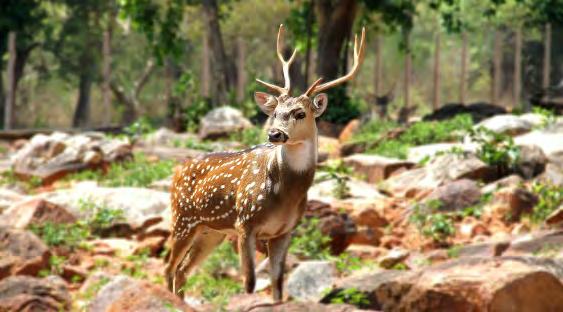
6 minute read
EXOTIC & CHARISMATIC
from India 2024
India is recognised globally for its incredible colours, culture and spices. But, its charismatic mixture of wildlife (some of the most exotic and rare in the world) also plays an important part in the country's heritage and culture. In Indian philosophy, life in any form is deemed sacred, and compassion for all living creatures is paramount.
Preserved in national parks and wildlife sanctuaries, India's rich and abundant animal life can be attributed to the country's diverse climate and geography. The Indian sub-continent is encircled by the Himalayas (world's highest mountain range) to the north and 7,000 kms of oceanic coastline, providing a geographically contained habitat for flora and fauna. This has kept the country's natural wealth unique, mysterious and fascinating.
Favourable climatic conditions and diverse landscapes have ensured the survival of an enormous range of species, probably providing the best wildlife viewing in Asia. Home to so many charismatic species, India has three of the world's 35 designated biodiversity hotspots - providing some of the richest natural habitats in the world. There are about 1,200 species of birds and 350 mammal species. In addition, of course, there are numerous fish and amphibian species, along with reptiles, who call India home.
The signature species for which India is best known are the tigers, elephants, leopards, monkeys, rhinos and antelopes. The most superb examples of the 'cats' are the Bengal tiger and the Asiatic lion, but there are many others as well. Mammals include the majestic elephant, the Indian bison (gaur), rhinoceros, and the swamp deer (barasingha). Monkey species are prolific in India and can be found walking the streets or swinging through the jungles. Among the most colourful birds are peacocks, hornbills, parrots, kingfishers, parakeets, cranes and ducks.
A SPECTACULAR RANGE OF PARKS & UNIQUE SPECIES
National Parks and Wildlife Sanctuaries in India are controlled by special Acts of Parliament, particularly designed to conserve the unique and most endangered wildlife - Bengal tigers, Asiatic elephants, Asiatic lions, Snow leopards and Siberian cranes. These conservation efforts are now paying off, providing a consistent increase in tigers, leopards and wild elephants. Global awareness of Indian wildlife was sharply heightened by Rudyard Kipling's 'The Jungle Book'.
Currently India is home to 60% of the world's wild tiger population (both Bengal and Indochinese tigers), 50% of the Asian elephants, 80% of the one-horned rhinoceros, and the entire remaining population of the Asiatic lion. ndia is the only country in the world with both lion and tiger, and it has the world's largest population of deer. Indigenous and unique to the sub-continent are the Indian sloth bear, the fourhorned chausinga antelope and the majestic swamp deer (barasinga). The Indian wild dog (dhole, or whistling hunter) is the most endangered carnivore, and the golden langur is the most endangered primate.
Each Sanctuary and National Park supports a range of wildlife, although several have developed a reputation as the home of a particular sought-after species - sometimes these are the rare and endangered species. The most reputable National Parks for wildlife are the central Indian parks of Kanha and Bandhavgarh with their dense forests and exotic wildlife populations. Kanha includes the largest original tiger reserves, and the rare swamp deer (barasingha) - while Ranthambore is the country's most scenic and famous National Park.
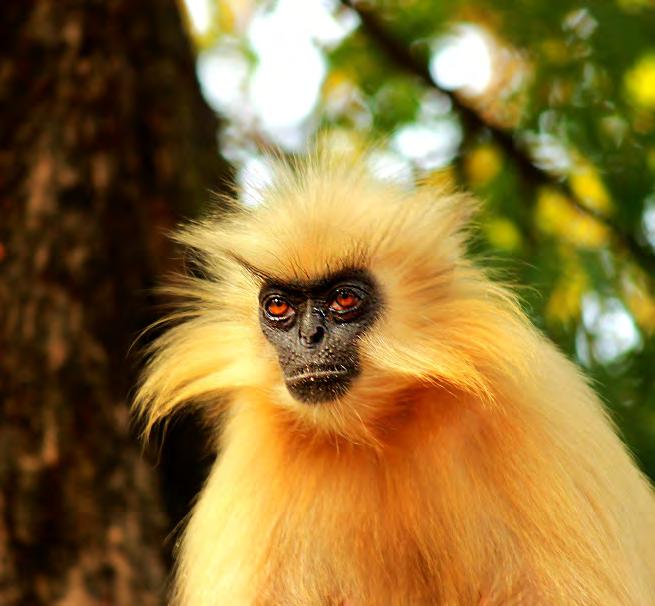
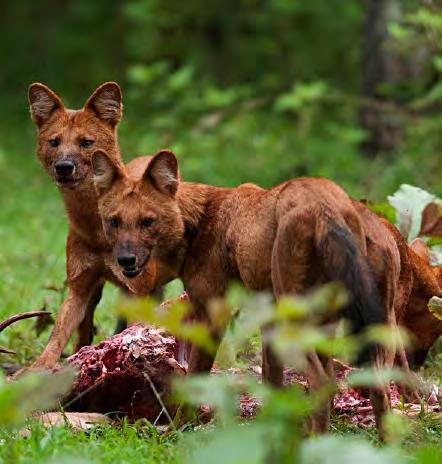
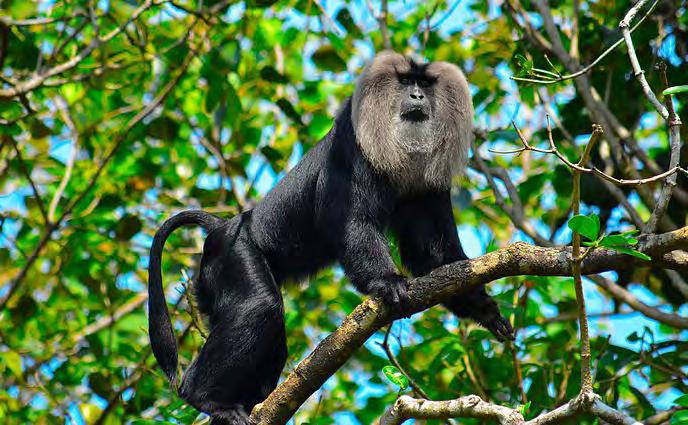
BOTH MYSTERIOUS & MAGNIFICENT
Above all other wildlife, India is most popularly associated with its Bengal tigers. Altogether there are 23 tiger reserves, home to approx 2,250 tigers. The Bengal tiger is the most dominating tiger species in Asia, and the symbolic national animal of the country - its roar can be heard nearly two kilometres away! It's the world's second largest species of wild cat (after the Siberian tiger), and quite an exotic beast! The Indian Government banned tiger hunting in 1970, and established Project Tiger (1972) specifically to conserve the tiger and its habitats. The tiger's natural habitats are the tropical evergreen and deciduous forests, mangrove swamps, and grass jungles of Ranthambore, Bandhavgarh, Jim Corbett and Sundarbans National Parks.
The Asiatic elephant is smaller than its African bush equivalent, although it is still the largest animal on the sub-continent. It has smaller ears than the African elephant, a convex or level back, and the females do not have tusks. The tallest of the wild cattle species is the Indian bison (gaur). It has a strong massively built body, with a prominent ridge along its back. Inhabiting the freshwater lakes and swamps, the mugger crocodile is the largest and most skilled predator of the river systems. The saltwater and gharial (most visually striking) crocodiles are two other crocodile species found there.
The Gir Forest of Central India is home to a population of Asiatic lions (King of the Indian jungle). Sometimes called the Indian lion, or Persian lion, it's found only in India, with approx 500 still in existence. One of the five 'big cats' found in India, they are the world's second largest feline species, after the tigers. Colourful (but endangered), the peacock is the national bird of India - both the male (peacock) and female (peahen) are similar in appearance. Found in the tropical forests, the male emits a loud repetitive call.
One of the most endangered animals in the world, the liontailed macaque is a particularly splendid-looking animal - one of 16 macaque species. It's an 'old world' monkey, only found in the least travelled regions of the tropical rainforests. Unfortunately, it is now so specifically adapted to its forest environment that it simply cannot adapt to any other environment - much like our Australian koala. There are less than 3,000 left in the country.
Altogether, India is home to some 172 threatened wildlife species - the Asian elephant, Asian lion, Bengal tiger, Mugger crocodile, Rhinoceros etc. Out of over a thousand bird species, 42 are endemic - you can't see them anywhere else. Some of the more common birds are the Green Bee Eater, Indian Roller, Laughing Dove, Ringed Parrot, and Blue Kingfisher.
Bandhavgarh National Park
This park is a haven for a whole host of animals. It's noted for having one of the highest densities of tiger, leopard, sloth bear, barking deer, Indian bison (gaur), large sambar deer, and spotted deer (chital). The reserve is also excellent for birdwatching, including the hornbill, crested serpent, hawk eagle and parakeet, among the wide range of species in the park. The best time to visit is from January to April for the tigers.
Kanha National Park
Set in classic Kipling country, this is the largest wildlife reserve in central India. It is one of the best places to see the majestic Bengal tiger in the wild, and home to Indian bison (gaur), leopard, hyena, wild boar, and deer - including the swamp deer (barasingha) and stately sambar deer. Over 300 species of birds and a thousand species of flowering plants have been recorded. The best time of the year to visit for the tigers is March, April or May.
Ranthambore National Park
Ranthambore occupies a long-held position as the country's best known, and one of the most important wildlife reserves. It has been at the forefront of efforts to protect and grow India's tiger population. It's a particularly beautiful park which (along with the tiger) is also home to leopard, macaque, sambar, langur, sloth bear, crocodile and spotted deer (chital). It's also home to reptiles like the cobra and python. The best time to visit is over the northern hemisphere winter, from November to April.
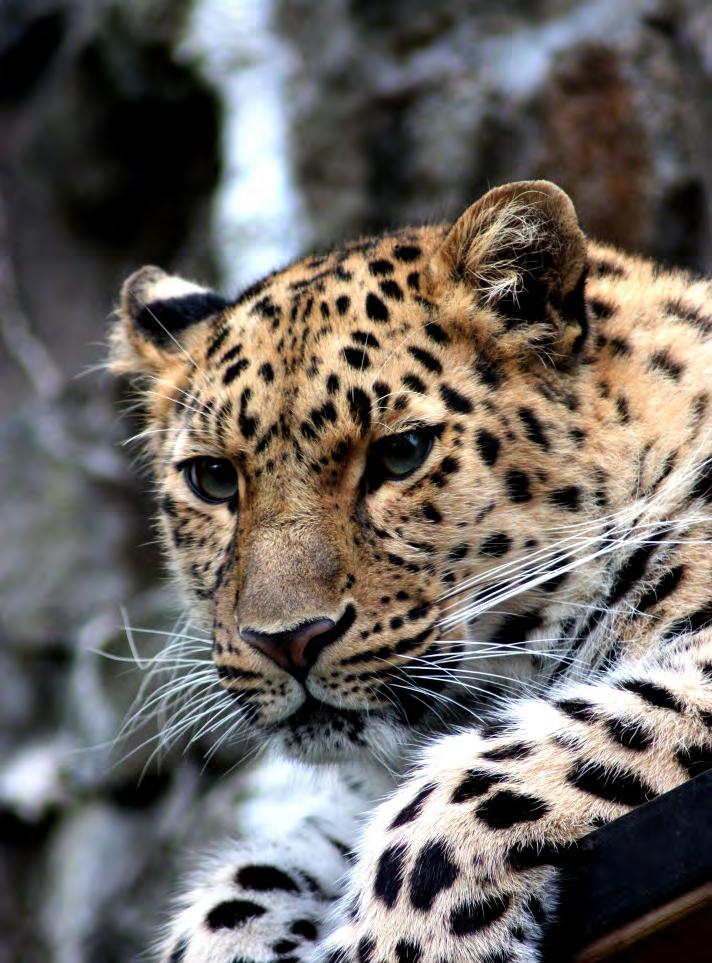
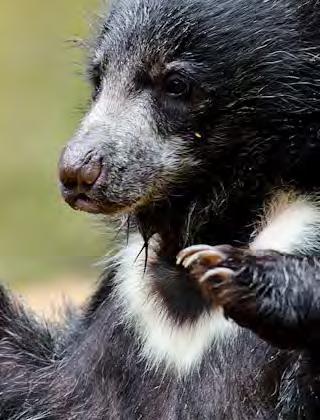
Taj Krishna Hyderabad - 2 Night Stay
Located in Banjara Hills, a prominent and central location in Hyderabad, Taj Krishna is the ideal luxury 5-star hotel for travelers to the city of Nizams! This luxury hotel offers easy access to the old city of Hyderabad, making it a perfect choice. Situated in the middle of over 13 acres of serene greenery in the heart of Hyderabad, offering solace to the weary traveler.
Novotel Aerocity Hotel New Delhi - 1 Night Stay
Adjacent to both the international & domestic airports, the Novotel New Delhi is well positioned and conveniently connected to the business hubs and shopping malls. The perfect accommodation for a onenight stopover in the capital, with ease of access to all transportation for a smooth transition. Featuring a Multi-Cuisine Buffet restaurant offering an exceptional culinary experience comprising Indian, Asian and European flavours coupled with an impeccable ambience. Sure to provide an enjoyable stay!
The Claridges Hotel Delhi - 1 Night Stay


Since inception The Claridges, New Delhi has striven to be the best in the business and has been successful in winning accolades from guests and fraternity. Over the years, The Claridges has ensured guests experience a world of exceptional luxury. Housing some of the finest restaurants of the city, a rejuvenating health center, adequately furnished rooms, a salubrious pool and lush green lawns that will make your experience worth cherishing.








